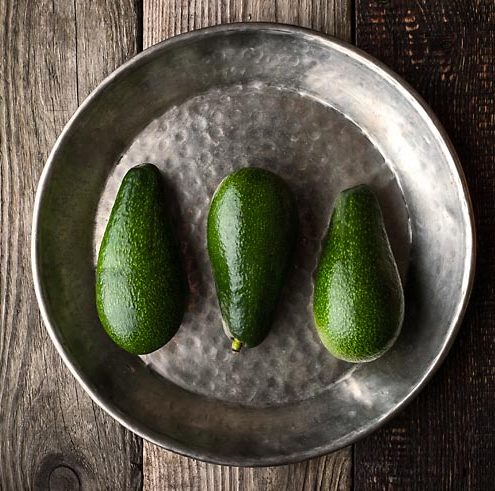This fruit is so mysterious that it is not even clear how to address it – your Excellency a vegetable or Your Excellency a fruit? The avocado is close and distant at the same time. Close because you can buy avocados in any market or supermarket, but far away due to the fact that in 90% of cases these avocados will be hard like cobblestones. Is the avocado worth the tambourine dances that are needed to choose a good fruit and make it soft, or were the avocados invented by our enemies in order to lure more money out of us? I suggest you answer this question yourself, and interesting facts about avocado, I hope, will make it your good friend.

- Avocados were the first to be tamed by the ancient Aztecs, who considered this fruit a symbol of love and fertility: the fact is that the avocado tree cannot self-pollinate, it needs a couple that will grow nearby. The first evidence of the consumption of avocados dates back to 8000 BC. The actual name of avocado is also the Aztec “aucatl”, altered by the Spaniards. Other names that the avocado has managed to acquire in its history are alligator pear, poor man’s oil, soldier’s oil, and others.
- While avocados are most commonly used in salads and sauces, avocado is not a vegetable, but a fruit. Moreover, it is still a fruit: among other fruits, it stands out for its protein content, as well as fiber, of which it contains as much as 7%. 3/4 of this volume is insoluble fiber (the one that aids digestion), the rest is soluble fiber (the one that makes you feel full).
- Don’t be discouraged if the avocado you bought turns out to be too hard: the truth is that although avocados grow on trees, they only become fully ripe after they are picked from the branch. Waiting for this day, an avocado can hang on a branch for up to 18 months, and nothing will happen to it. And you can make an avocado ripe at home by putting it in a paper bag for 2-3 days along with an apple and a banana.
- The most reliable way to check the ripeness of an avocado is not color (it differs from variety to variety and does not say anything), but softness. But do not rush to squeeze the avocado with your fingers – if it really sang, it will leave unpleasant dents on it: it is better to gently squeeze it with your whole palm. A ripe avocado is still firm but lends itself to gentle squeezing.
- “Aucatl”, as the Aztecs called avocados, translates as “forest oil”. Indeed, the fat content (it should be noted, very healthy fats) in avocados is as much as 15%. This means that if you come across a really ripe avocado, it can be used as an oil substitute – in sauces, baked goods, on bread, and even in ice cream.
- Avocado peel is its natural shell. As soon as you cut the skin off (or take out the pulp with a spoon, if the avocado is really ripe), the fruit begins to oxidize under the influence of oxygen and darken. There are many tricks to avoid this – pour oil or lime juice on a peeled avocado, and do not remove the pit from it, but the easiest way remains the most effective way: do not peel the avocado until you are ready to cook it.
- The most common avocado variety is called Hass and is named after the American postman Rudolf Hass, who discovered an avocado tree with delicious fruits in his yard and patented it in 1935. All Hass avocado trees are descended from the same tree, and it still bears fruit!
- On September 25, 1998, the avocado was officially listed in the Guinness Book of World Records as the most nutritious fruit.
- Avocado is a real storehouse of nutrients and trace elements. It contains vitamin E, extremely healthy vegetable fats, high amounts of potassium, the antioxidant glutathione, and a pigment called lutein, which is very beneficial for the eyes. According to the observations of experts, people who regularly eat avocados remain calm and collected, better tolerate stress, and remain optimistic even in difficult moments of life.
- The easiest way to quickly extract the pulp of an avocado is to cut it into two longitudinal halves, shift one relative to the other to separate them, stick a knife into the pit and turn it to remove it. The pulp can then be spooned out, and if your avocado is not so soft, it is best to peel it before cutting.
